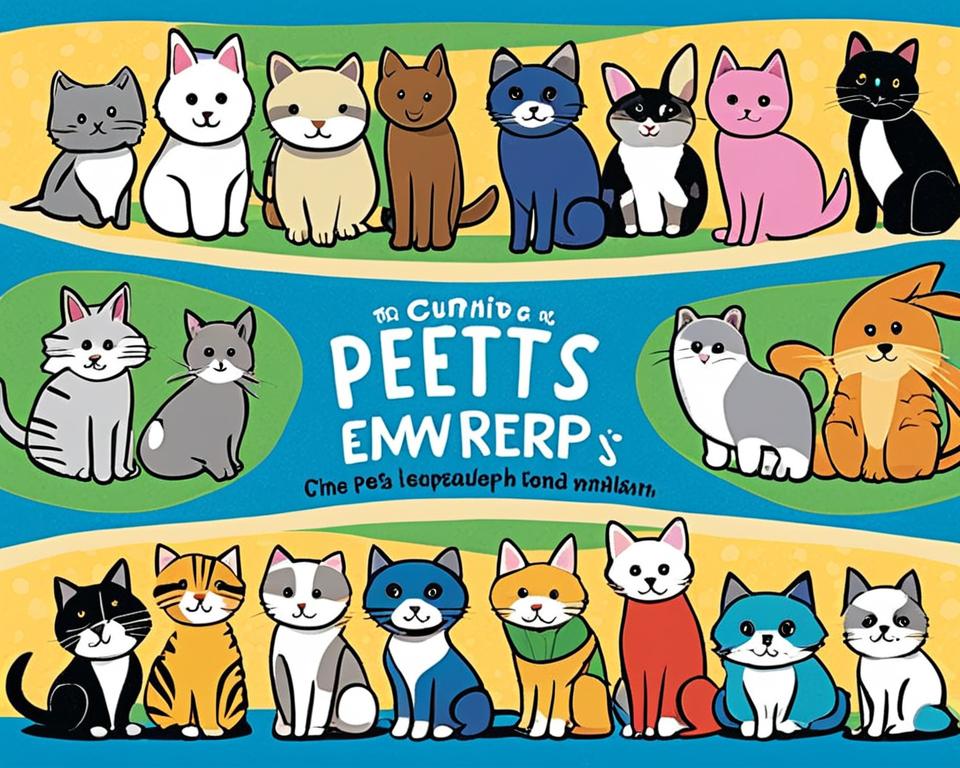In the post-industrial era, a remarkable shift has occurred in how we perceive and interact with our furry companions. Pets, particularly dogs, have transitioned from being viewed as separate from us to becoming profound objects of human affection and love. This shift has elevated our relationships with our pets, with it now being widely accepted to consider them as subjects that are in many ways equal to humans.
The once-prototypical Fido, relegated to the floor and scrounging for scraps, has been replaced by Lucy, a companion with increasing legal rights who enjoys the comforts of a bed and a varied, upscale diet. This transformation in the way we view and treat our pets is a testament to the growing cultural significance of the human-animal bond, pet ownership trends, and the emergence of emotional support animals and pet therapy.
Key Takeaways
- The cultural significance of pets has undergone a remarkable shift, with pets being increasingly viewed as companions and subjects rather than just animals.
- Pet ownership trends have seen a rise in the number of pets with legal rights and access to luxury amenities, reflecting the elevated status of pets in many societies.
- The human-animal bond has strengthened, with pets playing important roles as emotional support animals and in pet therapy.
- Cross-cultural perspectives on pets and their functions highlight the diverse ways in which pets are integrated into human societies worldwide.
- The representation of pets in literature and art, as well as the ethical considerations surrounding pet ownership, are crucial aspects of understanding the cultural significance of pets.
Introduction to the Cultural Significance of Pets
In recent decades, a remarkable shift has occurred in how we view and relate to our pets, particularly dogs, across post-industrial contexts worldwide. Once considered a species apart, pets are now being reconsidered as profoundly appropriate objects of human affection and love, with our relationships with them undergoing a significant elevation.
Pets as More Than Just Animals
It is now mainstream and socially acceptable in many places to regard pets as subjects that are in many ways equal to humans. The prototypical Fido, who once slept on the floor and ate scraps from the table, has been replaced by the likes of Lucy – a companion with increasing legal rights, who sleeps on a bed and enjoys upscale pet foods. This transformation reflects a growing recognition of the cultural significance of pets and the depth of the human-animal bond.
Shift Towards Considering Pets as Equals
The shift from perceiving pets as a separate species to considering them as equal, or even superior, to humans has been a profound and widespread phenomenon. This reconfiguration of the pet-human relationship has led to the normalization of treating pets as valued members of the family, with many enjoying enhanced legal protections and access to specialized services and amenities.
Elevating Relationships with Pets
The elevation of our relationships with pets has been driven by a range of factors, including the growing pet industry, the increasing prevalence of emotional support animals and pet therapy, and the cultural attitudes towards pets that have become more mainstream and socially acceptable in recent decades. As a result, the bonds between humans and their animal companions have deepened, leading to a greater appreciation for the cultural significance of pets in our societies.
The Rise of Pet Love in Post-Industrial Societies
In many post-industrial places across the world, pets, especially dogs, are being formally and regularly accommodated in public spaces like doggie beaches, parks, high-class hotels, cafes, and restaurants. This shift towards integrating pets into the fabric of urban life reflects the growing human-animal bond and the elevation of pet ownership trends in post-industrial societies.
Accommodating Pets in Public Spaces
The increased acceptance and accommodation of pets in public settings is a testament to the pets in society and the cultural attitudes towards pets. Businesses and public spaces are adapting to cater to the needs of pet owners, recognizing the importance of pets and mental health and the role of therapy pets in supporting human well-being.
Growth of Pet-Related Products and Services
The rise of pet love has also fueled the expansion of the pet industry and economy. Department stores and mainstream retail catalogs now feature substantial selections of pet-related commodities, while new genres of boutiques and retail outlets for pets, many of them online, have emerged. PetCo and PetSmart have become major purveyors of pet goods in the United States, catering to the growing demand for intensely commodified investment in pets.
Increasing Investment in the Pet Industry
The growth in pet-oriented goods and services in the US alone has averaged 6-7% per year over the last several years, helping to explain the American Pet Products Manufacturers Association’s findings that pet spending has more than doubled from $17 billion in 1994 to an estimated $38.4 billion in 2006. This surge in investment and spending reflects the cultural significance of pets and the deepening emotional support animals and pet therapy within post-industrial societies.
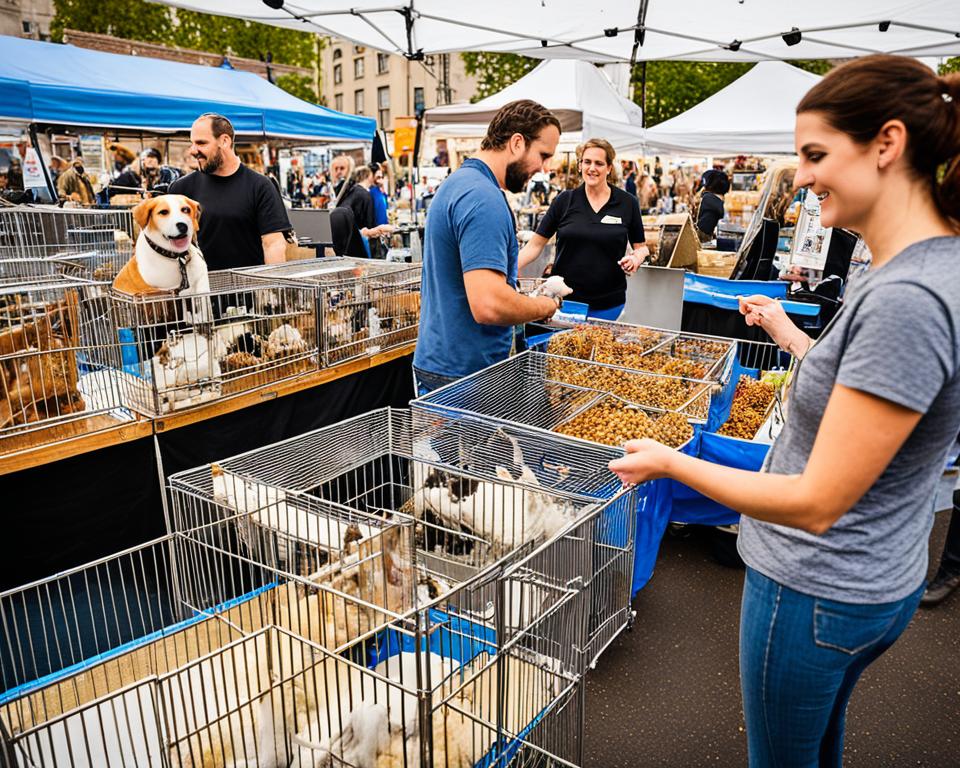
The Cultural Significance of Pets
The cultural significance of pets has been a topic of growing interest in recent years, as the human-animal bond has become increasingly recognized and celebrated across post-industrial societies. While scholars have extensively explored issues related to animal rights and the ethical treatment of animals, the phenomenon of “pet love” has largely gone unnoticed in social theory and social science circles.
Interestingly, those who possess a deep affinity for pets are often viewed as morally or even spiritually superior, while individuals with no interest in or fear of pets are often deemed social or psychological misfits. This shift in cultural attitudes towards pets has occurred rapidly over the past two decades, reflecting the rising prominence of pets in society, therapy pets, pets and mental health, and the broader cultural attitudes towards pets in post-industrial contexts.
Scholars have noted the need for a more critical and comprehensive examination of the cultural significance of pets, the human-animal bond, and the underlying factors driving the widespread pet ownership trends and the emotional support animals and pet therapy movements. A deeper understanding of the cross-cultural perspectives on pets and their representation in literature and art could also shed light on the complex interplay between humans and their animal companions.
As the pet industry and economy continues to grow and evolve, it is essential to consider the ethical considerations and animal welfare implications associated with the commodification of pets and the treatment of these sentient beings. Ultimately, the cultural significance of pets reflects the multifaceted and ever-changing relationships between humans and their animal companions, a phenomenon worthy of deeper scholarly examination and critical analysis.
Geographical Foundations of Pet Love
To fully comprehend the cultural significance of pets and the rise of pet love in post-industrial societies, it is essential to explore the geographical foundations underlying this phenomenon. The first source argues that what is needed to address the pet love groundswell critically and radically is a scholarly geographical elaboration of what might be called “critical pet studies” (CPS).
Territorialization of Pet Love
CPS would involve unpacking where popular pet love is evidenced and why and how this surge is occurring so decidedly in the twenty-first century. This would help build a variety of analytical and theoretical tools for questioning and framing the “outside” of this pervasive love for companion animals. Integral to CPS would be a sensitivity to the geographical underpinnings of pet love, such as where it is located and how it is territorialized.
Global Spread of Pet Love
Additionally, CPS would examine where and how the love for pets has traveled across the globe, tracing the diffusion of this cultural shift. By adopting a geographical lens, scholars can better understand the disparate contexts in which the human-animal bond has strengthened, the cultural attitudes towards pets that have emerged, and the factors driving the pet industry and economy in various regions.
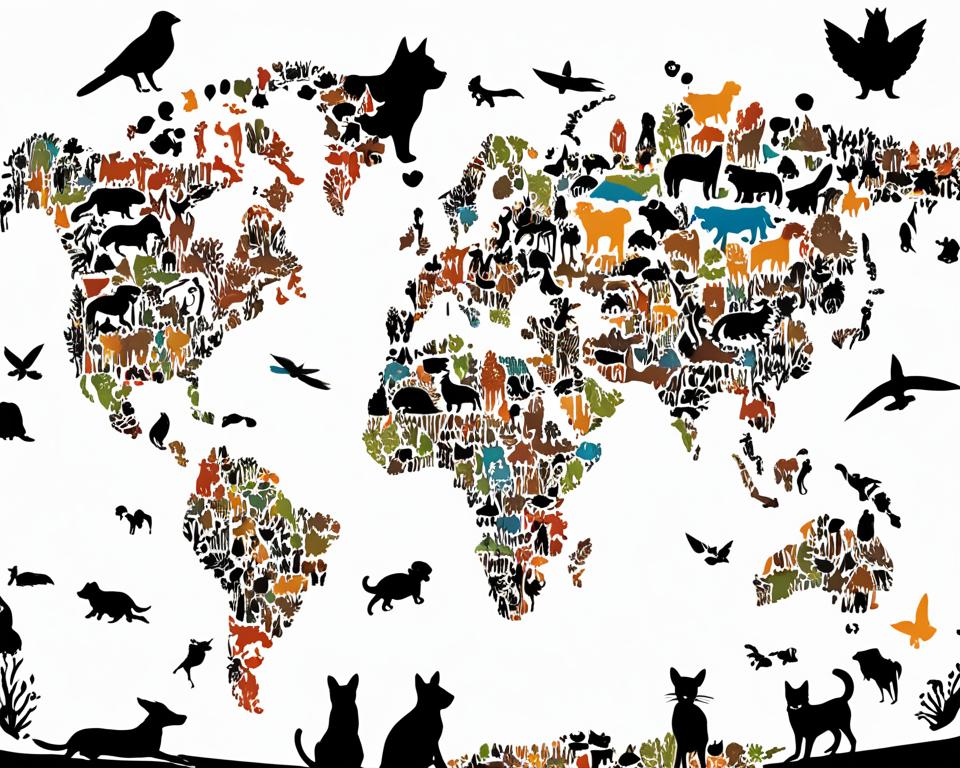
Pet Love and Consumerism
The cultural significance of pets has become deeply intertwined with the growth of post-industrial service and consumption sectors under largely neoliberal economic models. Pets have emerged not only as commodities themselves but also as sites of intensely commodified investment tied to global inequalities.
Pets as Commodities
Mainstream retail catalogues now feature substantial selections of pet-related goods, catering to the increasing demand for pet-centric consumer products. From high-end pet food and accessories to specialized grooming services and luxury pet-sitting options, the pet industry has become a thriving landscape of consumerism.
Intensely Commodified Investment in Pets
The human-animal bond has evolved into a lucrative arena, with the rise of pet-focused media outlets, such as specialized magazines, and the expansion of major pet retail chains like PetCo and PetSmart. As the pet industry has grown, so too have the number of services and advocacy groups dedicated to pets, particularly dogs, reflecting the intense commodification of our relationships with these beloved companions.
Cross-Cultural Perspectives on Pets
While the human-animal bond and pet ownership trends have been extensively studied in Western countries over the past two decades, our understanding of the dog-human relationship in non-Western cultures remains limited. The majority of research on this topic has focused on ‘WEIRD’ societies – Western, Educated, Industrialized, Rich, and Democratic – leaving a significant gap in our knowledge of how pets and pet therapy are perceived and utilized across diverse cultural contexts.
Varying Functions of Pets Across Cultures
The cultural significance of pets and the role they play in society can vary greatly depending on the cultural and historical context. In some cultures, pets may be seen primarily as working animals or as a source of food, while in others, they may be revered as emotional support animals or therapy pets. Understanding these cross-cultural perspectives on the function and value of pets is crucial for developing a more comprehensive understanding of the human-animal bond and cultural attitudes towards pets.
Influence of Pet Function on Human-Animal Bond
The specific function and role of pets within a given culture can also have a significant impact on the human-animal bond and the way people interact with and perceive their animal companions. In cultures where pets are primarily seen as working animals or sources of food, the emotional investment and attachment to these animals may be quite different from cultures where pets are viewed as companions and family members. Exploring these nuances can provide valuable insights into the cultural attitudes towards pets and the pet industry and economy in different parts of the world.
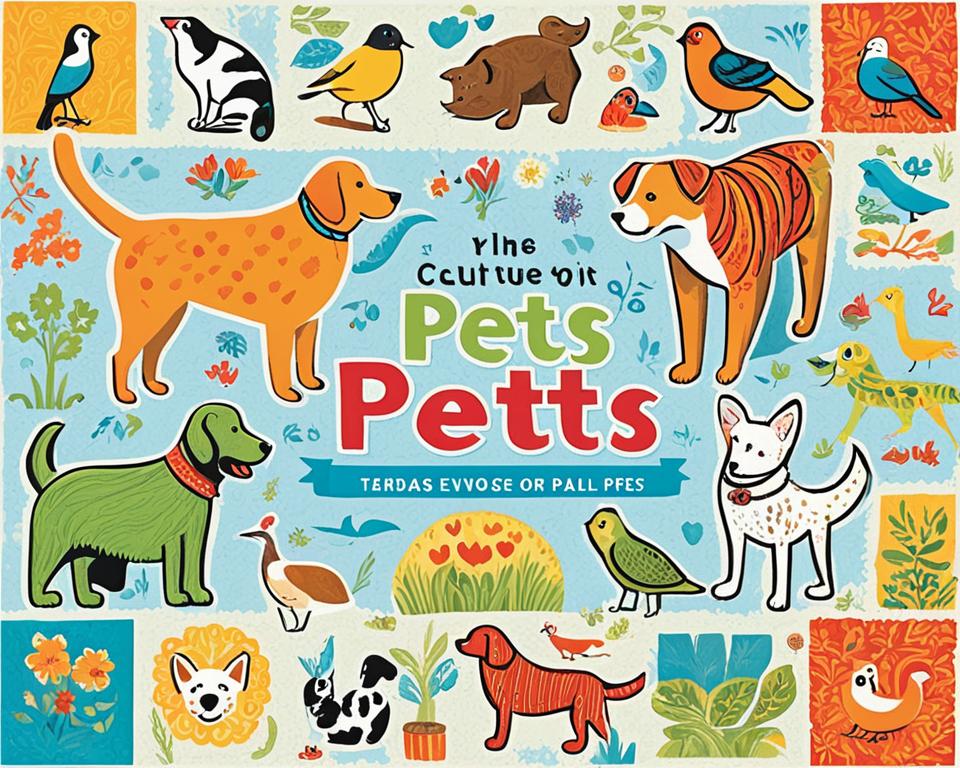
Pets in Literature and Art
While the cultural significance of pets has been extensively explored in social and behavioral research, their representation in literature and art has received comparatively less attention.
Nonetheless, a deeper examination of how pets are portrayed in cultural works can shed valuable light on the symbolic meaning and evolving perceptions of these beloved companions across societies.
Representation of Pets in Cultural Works
Throughout history, pets have been a recurring motif in various forms of artistic expression, from classical paintings to contemporary novels. These depictions often reflect the changing dynamics of the human-animal bond, highlighting the emotional significance and multifaceted roles that pets play in our lives.
In literature, pets have been featured as central characters, loyal sidekicks, or symbolic representations of themes such as companionship, unconditional love, and the interconnectedness of all living beings. Beloved authors like Ernest Hemingway, John Steinbeck, and Maya Angelou have all incorporated pets into their seminal works, using them to explore the depth of human emotions and the universal language of empathy.
Exploring the Symbolic Meaning of Pets
Beyond their literal presence in cultural works, pets have also been imbued with symbolic meaning, serving as metaphors for broader societal issues and psychological archetypes. In art, pets have been portrayed as embodiments of innocence, vulnerability, and the natural world, challenging the perceived divisions between human and animal existence.
Examining the representation of pets in literature and art can provide valuable insights into the evolving cultural attitudes towards animal welfare, the emotional significance of the human-animal bond, and the ways in which these beloved companions shape our understanding of ourselves and our place in the world.
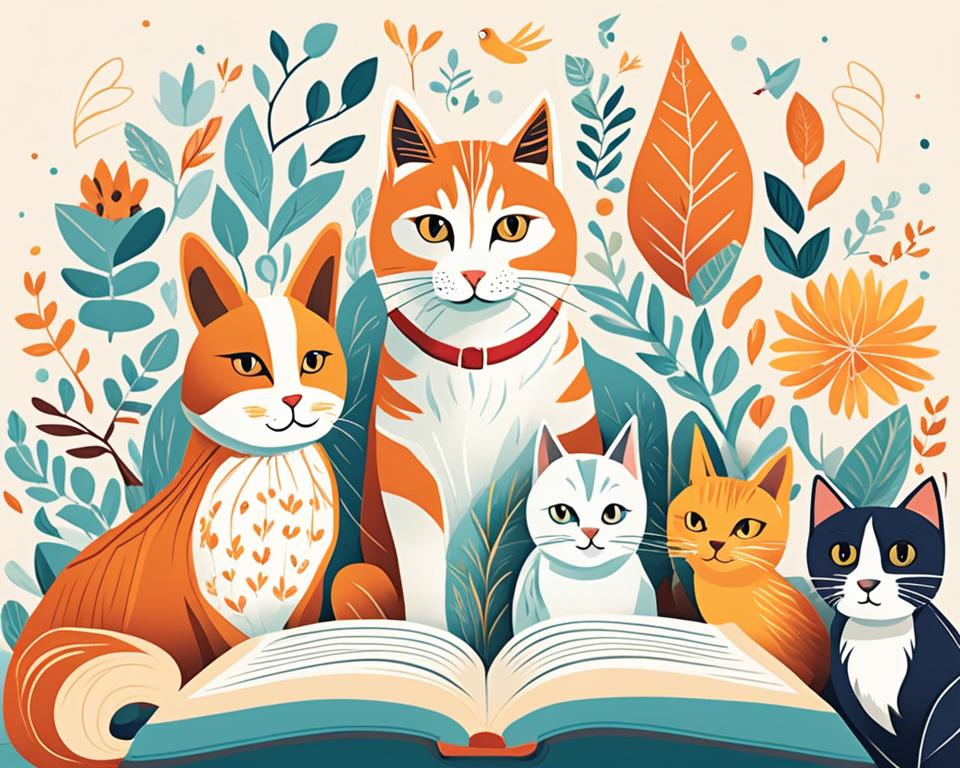
Ethical Considerations in Pet Ownership
As our understanding of animal welfare has evolved, there is growing recognition that pets, like other animals, can suffer from psychological, emotional, and physical pain. The sheer scale of animal exploitation worldwide, with approximately 200 million animals killed for human consumption each day, has led the animal rights movement to advocate for placing animals “beyond use” of human beings and ending exploitative industries and practices.
Animal Welfare and Pet Treatment
The welfare of pets has become a pressing ethical concern, as many pet owners grapple with the responsibilities and challenges of providing appropriate care and environments for their animal companions. From ensuring proper nutrition and exercise to addressing behavioral issues and veterinary needs, pet owners must balance the human-animal bond with the animal welfare considerations that come with pet ownership.
Responsible Pet Ownership Practices
Responsible pet ownership practices, such as adopting from shelters, spaying and neutering pets, and providing enriching environments, have become increasingly important in the face of pet ownership trends and the pet industry and economy. Ethical pet owners must also consider the cross-cultural perspectives on the role of pets in society and the emotional support animals and pet therapy that many individuals rely on for their mental health and wellbeing.

The Future of Pet Culture
As the world continues to evolve, the cultural significance of pets and the human-animal bond is poised to undergo transformative changes. The rise of emotional support animals, the growth of pet therapy, and the increasing cross-cultural perspectives on the role of pets in society suggest that the future of pet culture will be shaped by a diverse array of emerging trends and challenges.
Emerging Trends in Pet-Human Relationships
One notable trend is the growing acceptance and integration of pets into various aspects of daily life, from public spaces to mental health initiatives. The use of therapy pets to provide comfort and support to individuals struggling with mental health issues, such as anxiety, depression, and post-traumatic stress disorder, is becoming more widespread. Additionally, the recognition of emotional support animals as legitimate aids for individuals with disabilities has led to greater accommodation and legal protections for these animal companions.
Another emerging trend is the increasing personalization and customization of the pet industry. As consumers become more discerning and demand higher-quality products and services for their furry friends, the pet industry is responding with a diverse range of premium pet foods, luxury pet accessories, and specialized veterinary care. This trend reflects the growing cultural attitudes towards pets as integral members of the family, deserving of the same level of care and attention as their human counterparts.
Challenges and Opportunities
However, the future of pet culture is not without its challenges. Ethical considerations around animal welfare and responsible pet ownership practices will continue to be an area of concern, as the increased commodification of pets and the pet industry raises questions about the treatment and well-being of these animals. Advocates for animal rights will likely continue to push for greater protections and the recognition of pets as sentient beings deserving of respect and humane treatment.
Despite these challenges, the future of pet culture also presents exciting opportunities. As cross-cultural perspectives on the role of pets in society become more widespread, there is the potential for greater understanding and appreciation of the diverse ways in which pets are integrated into different cultural contexts. Furthermore, the growing interest in the therapeutic benefits of pets, combined with advancements in technology and research, could lead to the development of innovative pet-related products and services that enhance the well-being and quality of life for both pets and their human companions.
Conclusion
The cultural significance of pets has become increasingly prominent in post-industrial societies, as evidenced by the shifting attitudes and growing investment in the pet industry. The human-animal bond has been elevated, with pets now often viewed as companions and equals rather than mere animals. This shift has been accompanied by a rise in pet-related products, services, and advocacy, reflecting the growing importance of pets in our lives.
Exploring the cross-cultural perspectives on pets reveals that the function and role of pets can vary greatly across different societies. While Western countries have witnessed a surge in pet love and the commodification of the pet industry, the dog-human relationship in non-Western cultures remains understudied and may present different dynamics. Ethical considerations around animal welfare and responsible pet ownership practices have also gained attention, as the animal rights movement seeks to place animals “beyond use” of human beings.
As the pet culture continues to evolve, we can expect to see emerging trends in pet-human relationships, as well as both challenges and opportunities in the industry. Ultimately, the cultural significance of pets is a multifaceted and complex topic that warrants further scholarly exploration, particularly through the lens of “critical pet studies” to better understand the geographical foundations and societal implications of this phenomenon.
FAQ
What is the cultural significance of pets in post-industrial societies?
How have the relationships between humans and pets evolved over time?
How has the pet industry and economy grown in recent years?
How do cross-cultural perspectives on pets differ from the Western view?
How are ethical considerations addressed in pet ownership?
What are the geographical foundations of the rise of pet love?
How are pets represented in literature and art, and what is the symbolic meaning of pets?
Source Links
- https://faunalytics.org/the-animal-rights-movement-history-and-facts-about-animal-rights/
- https://www.sas.upenn.edu/~cavitch/pdf-library/Nast_CriticalPetStudies.pdf
- https://www.nature.com/articles/s41598-023-31938-5
